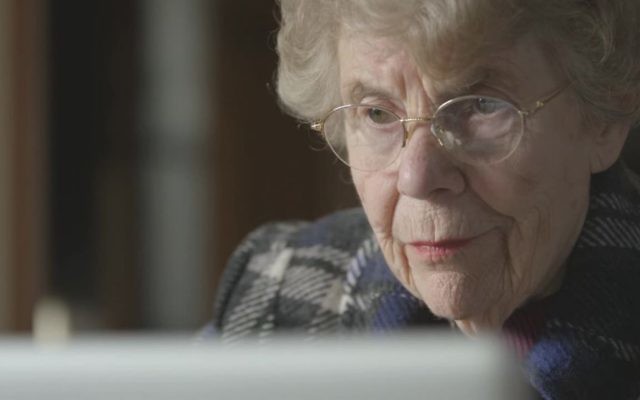AJFF Review: ‘Every Face’ Ties Holocaust to Current Refugees
By Tiffany Parks
Magnus Gertten’s documentary “Every Face Has a Name” reflects the director’s ambitious attempt to use the Holocaust narrative, particularly the plight of the women, to bring attention and sensitivity to the current refugees around the world.
The documentary focuses on a rare 35mm Swedish newsreel from 1945, showing tired, emaciated women pouring out of boats onto the docks of Malmo, Sweden. The women are mostly Jewish Holocaust survivors from cross Europe, along with political prisoners, resistance fighters and prisoners of war.
They are wearing a mix of filthy camp clothes, bulky coats, and worn-out shoes. They are carrying heavy Red Cross relief packages as if they were precious jewels. Many of the women are holding weak-looking babies who no doubt were born under the worst of conditions.
Seventy years later, Gertten was able to find many of the women in the film. The three who give the most powerful testimonies are Fredzia Marmur, Nurit Stern and Italian-American student Elsie Ragusin.
Marmur recognizes herself in the newsreel despite the oversized clothes that buried her 9-year-old frame. She is seen taking candy from a relief worker and gleefully waving at the cameraman. Her ability to be playful after experiencing life in the Lodz Ghetto is a powerful image of hope and resilience.
Stern is the most defiant woman of the trio. She tells the director she will discuss only the day of liberation, not the war. The newsreel reveals a determined soul peering from her young face. She survived the war by bartering her bread for a woolen coat that she proudly identifies in the newsreel.
Ragusin is the only American featured in the film. She was visiting her grandparents in Italy when the war broke out. The Nazis accused her of being a spy and arrested her. She was sent to Ravensbrück, then to Auschwitz for a year.
From the beginning to the end of the film, the director interrupts the survivors’ powerful narratives by showing silent images of refugees from Syria and West Africa arriving by boat in Italy. The director is confident that the voices of Marmur, Stern and Ragusin speak for the current refugees. He hopes that the desperate sight of the women in the newsreel will offer a parallel to the crisis for the current refugees.
The controversial aspect is his belief that the current refugee crisis is the same as what Holocaust refugees had to endure, and he hopes that coupling the images will illicit great sympathy. The color blue is seen throughout the film as a symbol that hope can conquer even the most difficult human circumstances.




comments